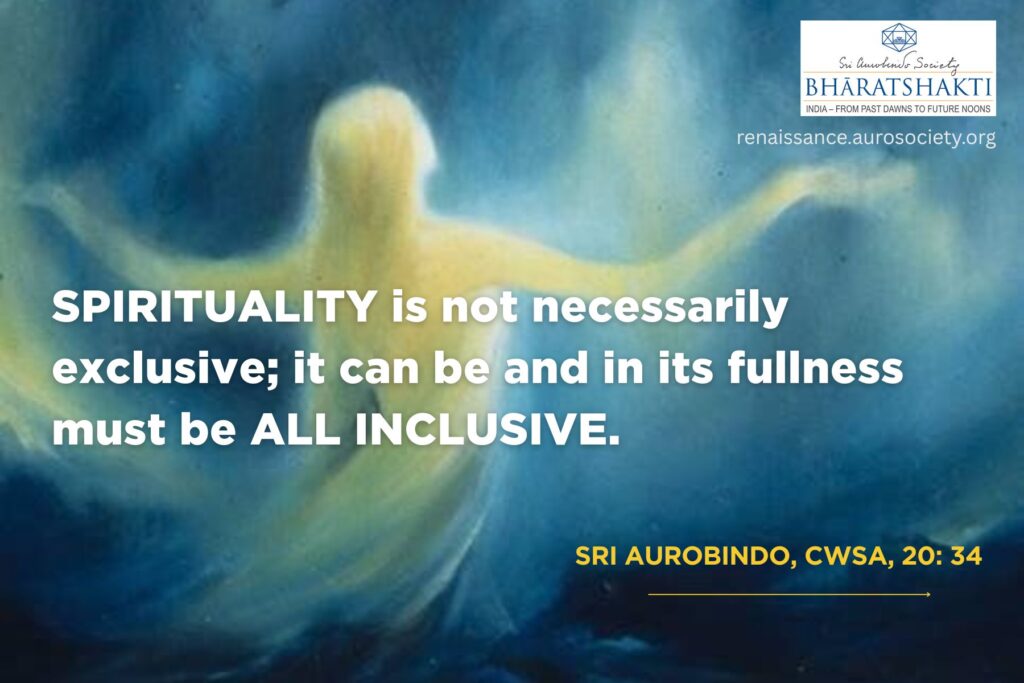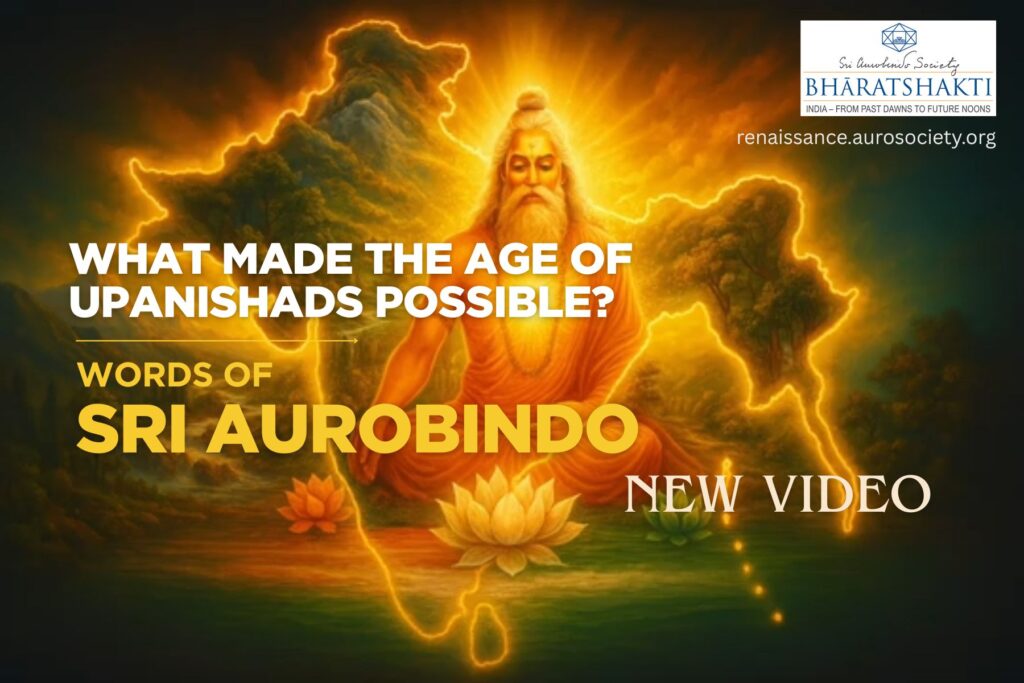Volume VI, Issue 4
Author: Jishnu Guha
Continued from Part 1
Editor’s Note: In Part 1 of this overview on history of Art in India, the author emphasised the ‘sacred’ and the ‘spiritual’ foundation of all artistic creation in India. He focused mostly on the sculptural art in India. This part gives a brief history of Indian painting.
The spirit and motive of Indian painting are in their centre of conception and shaping force of sight identical with the inspiring vision of Indian sculpture.
~ Sri Aurobindo, CWSA, Vol. 20, p. 301
What we see of the Indian paintings is what has survived in the current era; we are not aware of the treasures lost to weather and invasions. There is also a view that the Indian artists chose the path of sculpture as a method of offering because that is more durable and more difficult a path to perfect compared to painting. The earliest reference of the word chitra (painting) is found in Rig Vedas. In later texts such as Ramayana and Mahabharata, there are mentions of halls with paintings, similar to the concept of Chaitya halls of Buddhist era which were adorned with paintings.

Frescoes and Murals
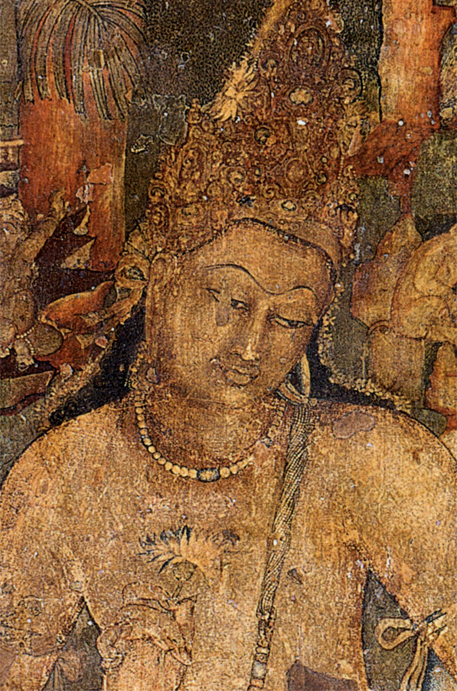
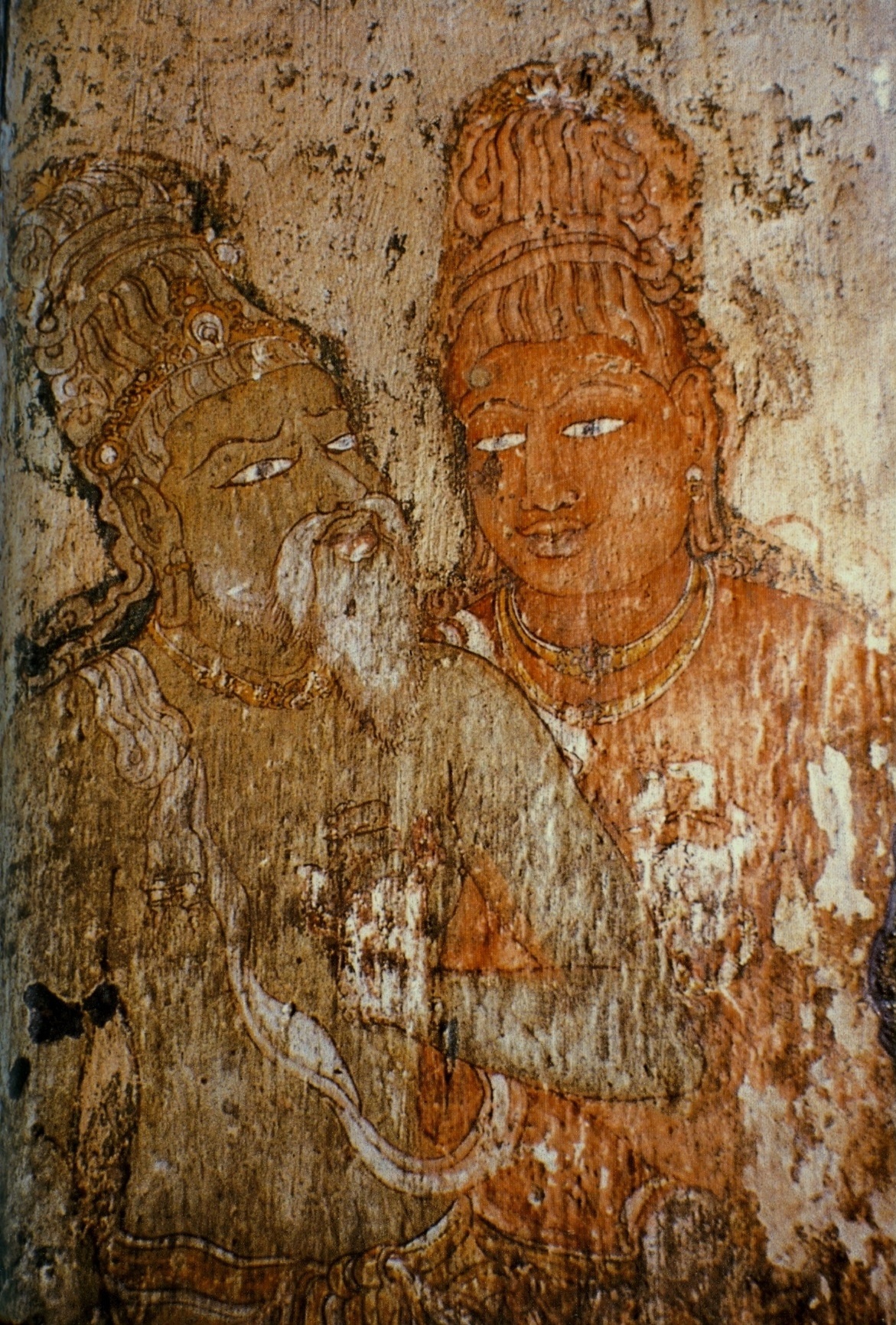
The finest examples of the Indian paintings of past era are from Ajanta Caves, built in two phases between 2nd Century BCE and 4th century CE. This signifies a continuity of a tradition of around six hundred years by then. Similar other frescoes have been found in Bagh Caves. Sittanavasal rock-cut Jain caves in Tamil Nadu, built in 2nd Century CE, also have murals dated circa 7the century. In Brihadisvara Temple at Thanjavur, 10th or 11th century murals were discovered under the plaster of recent murals from 17th century. Nalanda monastery is also said to have murals, but they were all destroyed and only fragments have been found.
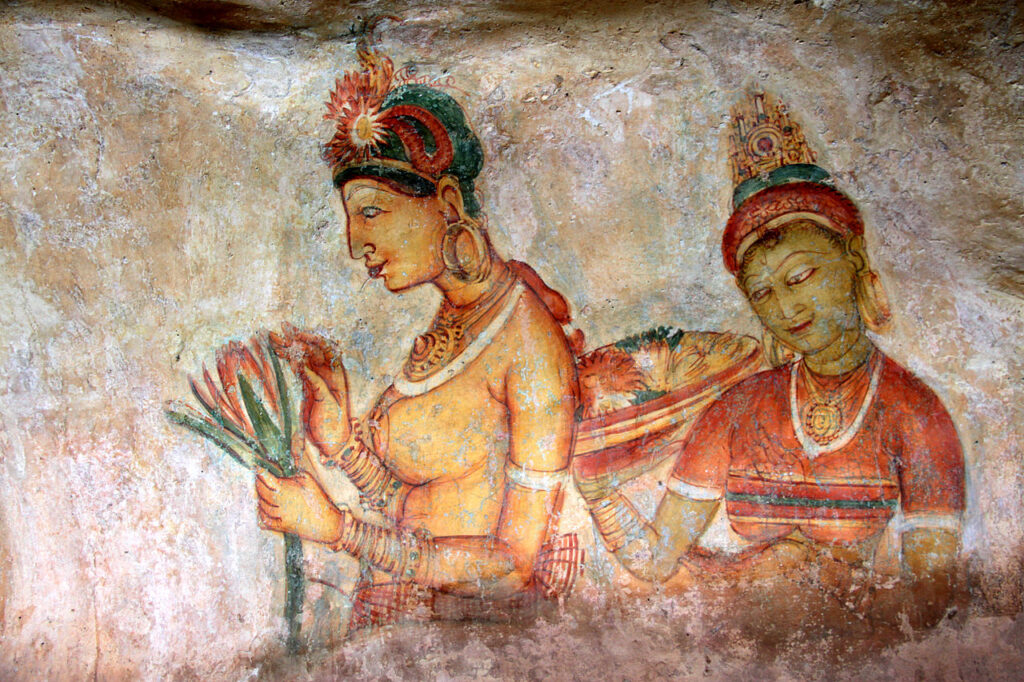
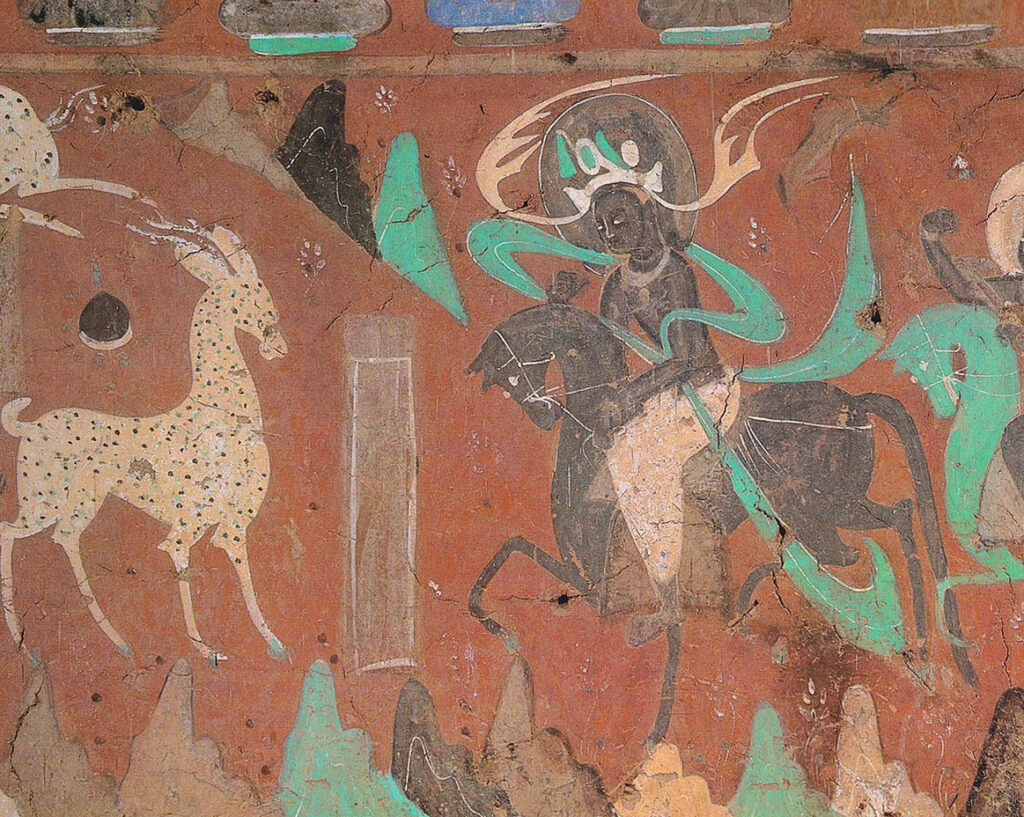
Similar style of paintings on Buddhist themes have been found in Sigiriya, Sri Lanka and in Duahung cave temples in China. This suggests that the Indian art of painting frescoes also travelled far and wide, like rest of the Indian cultural influences.
Illuminated Manuscripts
In addition to the art of painting frescoes, the art of illuminated manuscripts also flourished in India. On small rectangular palm leaves tied together as a book, the artists intricately painted on the margins or in the little space between two text areas. Valuable manuscripts were destroyed during the foreign invasions. But some, especially the Buddhist ones, got saved and were persevered in Nepal and Tibet as the fleeing students carried the materials.
Also read in this issue about Ajanta of the Himalayas:
Tabo – A Lamp for the Kingdom
The earliest found illustrated manuscript till date is Prajñāpāramitāstotra of 983 CE found in Nepal. Manuscripts of texts related to Kashmiri Shaivism of the same era were also found in Nepal. The Jain tradition also richly contributed to the manuscript art. It is not surprising that many of these manuscripts were considered so sacred that they were worshipped. It is a tradition that still lives.

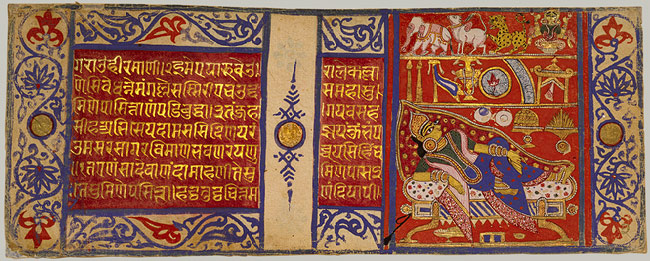
Changing Motive of Art
As paper replaced palm leaves the artists got a wider space and pallete. Later these artists contributed to the development of the miniature art in the Mughal Courts. It was only in the Mughal courts that entertainment became the primary motive of painting. The late Mughal age was a period of decadence of Indian painting. Many of these painters left the declining Mughal courts to join the ateliers under the patronage of kings of Rajasthan and Himachal Pradesh. This gave shape to different streams of miniature paintings.
It is also important to point that during the Mughal period, painting was enriched by Indian artists, both in terms of ideas and skill. That is why not only Mughal Miniature paintings are distinct from the Persian ones, but the notable examples of Islamic architecture across the world are also found in India.
A unique art form integrating colour and music, the Ragmaala Paintings, are contemplations on Ragas expressed in the form of paintings. This genre existed from 5th century onward. But it flourished between 16th and 19th centuries, under the patronage of Rajput courts.
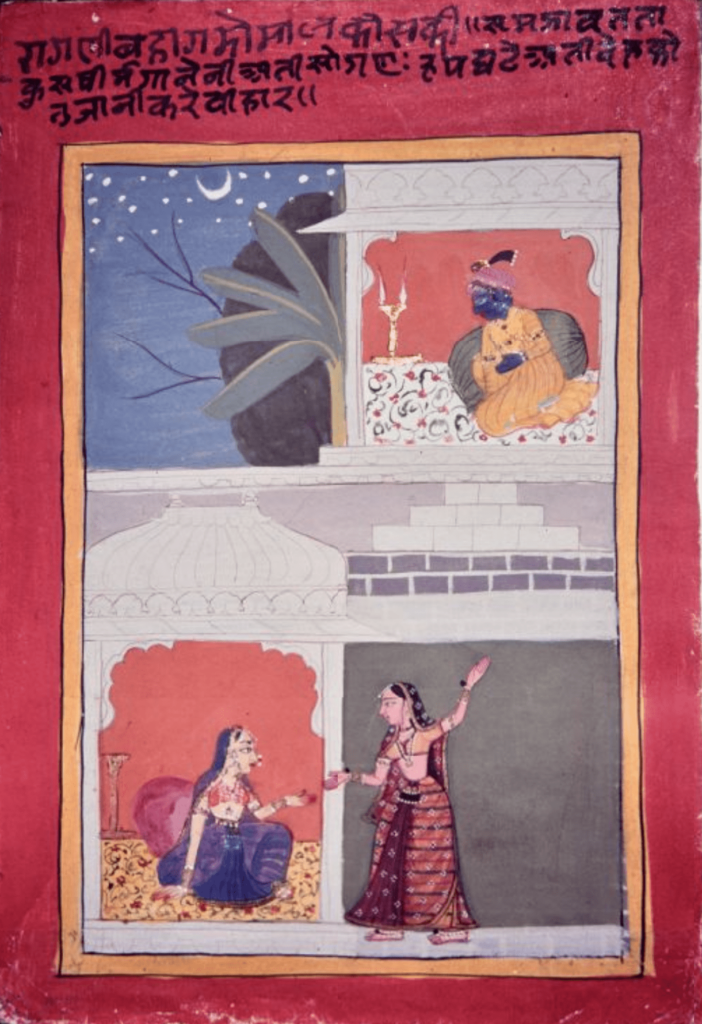
Rediscovery of the Indian Spirit in Painting
The colonial era hampered the free development of the Indian mind. Some of the art-based industry such as Textile manufacturing was severely crippled, as it conflicted with British interests. Art education in colleges was imparted along the European lines. Though it must be noted that some English artists and art scholars also made invaluable contributions in preserving the historical monuments and art.
In early 20th century, with the rise of the Indian Nationalism, we see founding of organisations such as Indian Society of Oriental Art, leading to Bengal School of Art movement where a cluster of artists worked based on Indian techniques and style. A few of these artists played a crucial role in copying, preserving the Ajanta murals and educating the public. This art movement set the tone of artistic thought in modern India. Some of the iconic works such as Bharata Mata, played an important role in galvanising the public during national movement.


Unity and Continuity
… we find that the spirit and tradition which reigns through all changes of style and manner at Ajanta, is present too at Bagh and Sigiriya, in the Khotan frescoes, in the illuminations of Buddhist manuscripts of a much later time and in spite of the change of form and manner is still spiritually the same in the Rajput paintings. This unity and continuity enable us to distinguish and arrive at a clear understanding of what is the essential aim, inner turn and motive, spiritual method which differentiate Indian painting first from occidental work and then from the nearer and more kindred art of other countries of Asia.
~ Sri Aurobindo, CWSA, Vol. 20, p. 301
We see confluence of ideas of Buddhism, Hinduism, Jainism, in Indian Art, which is vast and transcends sharp sectarian lines. All these thought streams are held together with the golden thread of the Vedas. Multiple cave complexes show how across the ages, artists worked over generations, at times in the same period, expressing different religious thoughts without disturbing other art forms.
Concluding Thoughts
In this article, as well as its earlier part, I have briefly touched upon only a few ideas concerning painting, sculpture and architecture. I have not covered at all the rich folk art traditions. But it is evident from the few examples that there has been a vibrant and continuous tradition of Art in India, built on the culture’s spiritual foundations. This tradition survived and flourished despite various influences over the centuries, in Indian mainland as well as in sister cultures.
The aim of life as per the Indian view is spiritual, and Indian Art reflects that goal. Just as the Indian mind gives importance to authentic experience over scriptures, similarly the Indian artists have always endeavoured to express the spirit behind the forms. And in their best works they have expressed the Infinite through the finite.
Read Part 1
~ Design: Beloo Mehra


